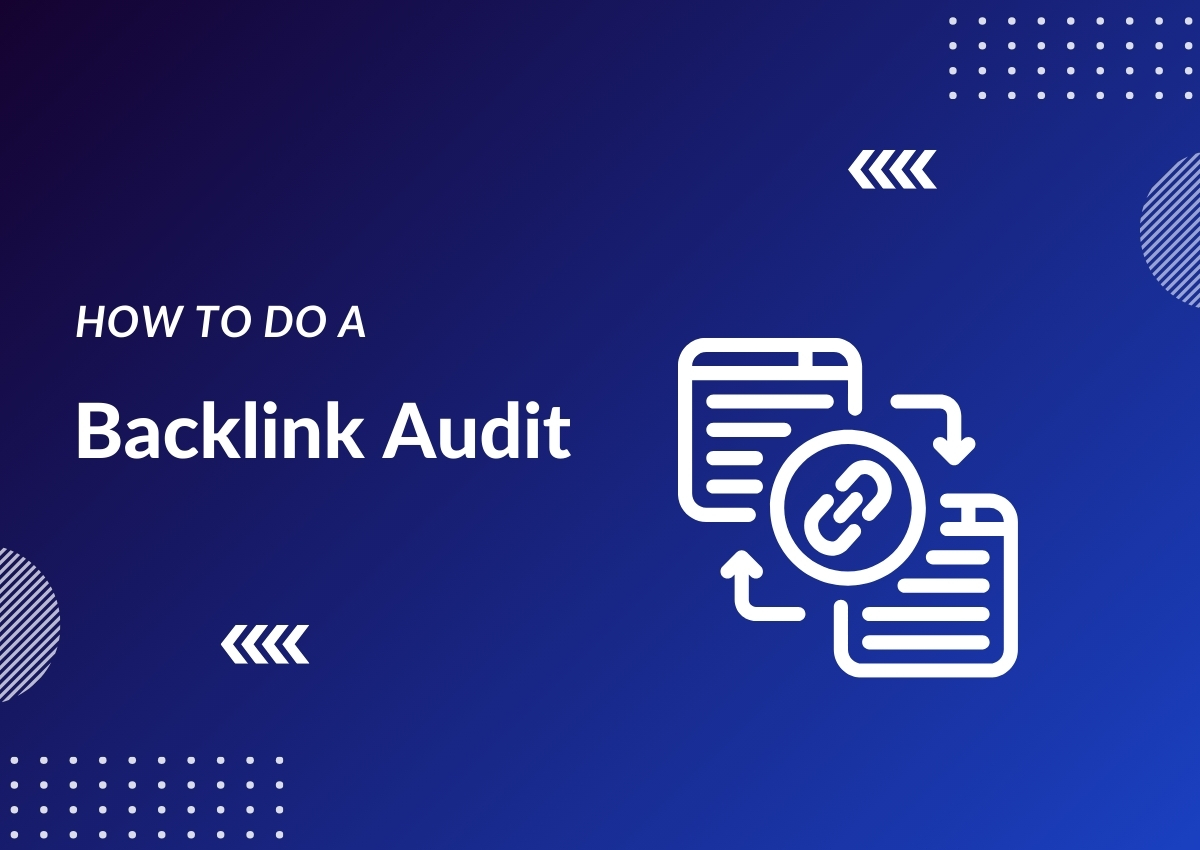How to Do a Backlink Audit in 8 Simple Steps

Many websites get penalized or lose ranking on search engines due to poor backlink profiles.
So, it’s important to check and assess the quality of your backlinks regularly.
A backlink audit can help you identify issues like getting broken or spammy backlinks and having other websites link to you with inappropriate anchor texts.
In this guide, I will walk you through the steps on how to do a backlink audit in 8 simple steps.
By following these steps, you can ensure that your website has a healthy and high-quality backlink profile.
So that it can improve your overall SEO performance.
What is a Backlink Audit?
A backlink audit is a process of analyzing the quality and quantity of incoming links to your website.
It helps you identify any toxic or low-quality backlinks that may be harming your search engine rankings and overall online presence.
Why is it important to do a backlink audit?
Performing a backlink audit is crucial for maintaining a strong online presence and improving your search engine rankings.
Low-quality or toxic backlinks can negatively impact your website’s credibility and authority, leading to lower rankings on search engine results pages (SERPs).
By regularly conducting a backlink audit, you can identify and remove any harmful links, ensuring that your website maintains a positive reputation and appears higher in search results.
How to Do a Thorough Backlink Audit in 8 Simple Steps
Step 1: Get an Overview of Your Link Profile (And Your Competitors)
The first step is to gather data on your website’s backlink profile.
You can use tools like Ahrefs or Semrush to get a comprehensive list of all the backlinks pointing to your website.
It’s also beneficial to analyze your competitor’s backlink profiles, as this will give you insights into their potential link-building opportunities.
Step 2: Find and Pool Your Backlinks
Once you have gathered the data, it’s time to consolidate all your backlinks into one document.
This will make it easier to analyze and identify any patterns or trends. Check for any duplicate or broken links and remove them from the list.
Step 3: Determine the Quality of Each Backlink
Go through each backlink and assess its quality based on factors such as relevance, authority, and traffic.
You can use tools like Moz’s Domain Authority Checker and Ahrefs’ Backlink Checker to evaluate each link’s quality.
Step 4: Identify Toxic and Low-Quality Backlinks
Using the data, identify any links that may be harmful to your website’s rankings.
This includes spammy or irrelevant sites, links with a low domain authority, and those with a high volume of outbound links.
Analyze the anchor texts for each link and flag any that seem suspicious or manipulative.
Step 5: Disavow and Remove Harmful Links
After identifying toxic or low-quality links, it’s crucial to remove them from your backlink profile.
You can reach out to webmasters and request the removal of the link or use Google’s disavow tool to request that they do not consider those links when evaluating your website’s ranking.
Also, it’s important to regularly check your disavow list and update it as needed.
Step 6: Reclaim Your Lost and Broken Backlinks
Broken or lost backlinks can harm your website’s SEO and overall traffic.
Use tools like Ahrefs’ Broken Link Checker to identify these links and work on reclaiming them by reaching out to the webmaster or fixing any broken pages on your website.
If you can’t reclaim the lost link, consider replacing it with a new high-quality backlink.
Step 7: Refresh Your Old Content
Update and improve your existing content to attract new backlinks.
Performing regular content audits can help you identify outdated content that needs to be refreshed.
By updating your articles, you can attract more high-quality backlinks, which will ultimately boost your website’s search engine rankings.
Step 8: Find New Opportunities to Build Valuable Links
Lastly, use your backlink audit results to find new opportunities for link building.
Look for high-authority websites that are relevant to your industry and reach out to them with valuable content or collaboration ideas.
You can also look for broken links on other websites and request them to replace with a link to your own website.
Best Tools for Useful Backlink Audit
Google Search Console
You can use Google Search Console to monitor and manage your website’s presence in Google search results.
It provides valuable data on the number of backlinks, top-linked pages, anchor text distribution, and so many more.
It alone can give you a good idea of your website’s overall link profile and potential areas for improvement. And the best part is it’s completely free to use!
Ahrefs
Ahrefs is a powerful SEO tool that provides in-depth backlink analysis and competitive research.
It allows you to analyze your website’s backlink profile, identify any toxic or low-quality links, and track the progress of your link-building efforts.
Almost every SEO in the industry swears by Ahrefs for its accuracy and comprehensive data.
You can create a comprehensive backlink audit report with Ahrefs easily.
Ahrefs Lite plans start from $99/month with a 7-day trial available for $7.
The pricing plans could be high for beginners, but it’s definitely worth the investment for your businesses.
Semrush
Semrush is another popular SEO tool that offers backlink analysis, competitive research, and keyword-tracking features.
It provides insights into your website’s backlink profile and helps you identify any harmful links.
Semrush also offers a disavow tool to help you remove toxic links from your profile easily.
Unline Ahrefs also has tools that can help you in content marketing, PPC advertising, social media management, and more.
Semrush pricing starts at $119.95/month with a 7-day trial available for $1.
This tool is best suited for marketers and SEO professionals looking to optimize their overall online presence.
Moz Pro
Moz Pro is another popular SEO tool that offers backlink analysis and monitoring features.
It provides a detailed overview of your website’s link profile, including spam score, anchor text distribution, and top linking domains.
The Moz Link Explorer also allows you to identify and disavow toxic or low-quality links easily.
Moz offers a free limited version of its tool, but the full version starts at $99/month with a 30-day free trial.
It’s a great option for businesses and agencies looking for an all-in-one SEO tool.
To Sum it Up
Conducting a backlink audit is crucial for maintaining a healthy and effective link profile.
Follow the steps mentioned above and use the recommended tools for a comprehensive backlink audit.
Remember to regularly monitor your website’s backlinks and make necessary changes to keep your link profile optimized for success.
With a strong and high-quality backlink profile, you will always step ahead in the competitive world of SEO.
And If you need any help conducting a backlink audit, just reach out to me – I’m always happy to assist! Thank you for reading.
